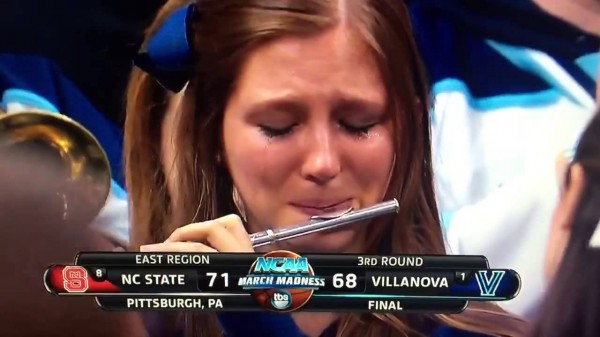The Big East Fell Flat, or Did It?
Posted by Justin Kundrat on March 25th, 2015A curtain of despair has suddenly fallen over the Big East’s 10 members. After starting off with an unblemished 4-0 record in the first day of the NCAA Tournament, five of the league’s six invited teams peeled off over the remaining three days, save Xavier (which played Cinderella story, Georgia State). What was considered the second-best conference from top to bottom now stands at just 5-5 with the Musketeers facing a significant battle against Arizona on Thursday night in Los Angeles. Even the conference’s biggest proponents can’t mask their disappointment with how things have played out. A whopping 60 percent of the league’s teams qualified — five of which were granted a #6 seed or better — and yet here we are, with only one school advancing past the first weekend. So what happened? Is this a problem with the conference as a whole or simply those individual teams? Or is it a problem at all?
To preface this examination, I had set the over/under at 2.5 for the number of Big East teams advancing to the Sweet Sixteen. This was under the presumption that Villanova was a near-lock and that two of the remaining schools would receive favorable enough draws to break through. The results were not ideal but the league’s overall performance cannot be blamed on the quality of the conference itself. Anyone who thinks that the Big East didn’t have talented players or deserve its six bids hasn’t watched the league this season. Sure, it wasn’t as top-heavy as the ACC but nearly every game was competitive and served to battle-test each team. Still, a team’s ability to achieve postseason success does not necessarily correlate with regular season scheduling. Teams likes Wichita State, Butler, Davidson, Northern Iowa and Gonzaga have had successful postseasons in years past despite playing softer conference schedules.
The Big East’s under-performance this March lies in individual games where opponents exploited weaknesses and exposed mismatches. No specific team other than Villanova lost a game it truly had no business losing. The results alone start to appear bad when we examine the conference as a whole. Let’s dig into each team’s situation:
Villanova triumphed over #16 seed Lafayette in dominant fashion and finally appeared to have shaken off the NCAA Tournament jitters that have plagued some past Wildcats teams. But their next opponent, NC State, pulled them right back out. A physically imposing front line enabled the Wolfpack to haul down an 11-rebound edge for the game while scoring at will in the paint. Simultaneously, Villanova’s jump shots weren’t falling, putting a great degree of pressure on its defense. The combination was a recipe for disaster against an athletic NC State group that had beaten the likes of Duke, North Carolina and Louisville this season but struggled with consistency. No excuses should be made for the Big East’s regular season and tournament champion, but a defeat at the hands of a #8 seed represented the league’s biggest shortcoming and the primary driver of the accompanying doubts.
Next is Georgetown, which shuttered Eastern Washington’s high-powered offense with its lockdown defense on Thursday. Where the Hoyas fell short was on Saturday against a superior defensive team that limited D’Vauntes Smith-Rivera’s scoring. Even though Georgetown was that higher seed (#4) against Utah (#5), this result shouldn’t have come as a surprise given that the Hoyas were underdogs. Nor should #9 St. John’s loss to #8 San Diego State in a game that forced the Red Storm to start the 6’6″ Sir’Dominic Pointer at center; or #6 Butler‘s overtime loss at the hands of #3 Notre Dame. And while #6 Providence was favored by three points over #11 Dayton, the Friars were out of sorts in what was a virtual home game in Columbus for the Friars. All of these games, while winnable, should not be declared as upsets or league-wide shortcomings given their opponents and the surrounding circumstances.
So that leaves the ultimate question: If a team advances as far into the NCAA Tournament as it were supposed to, should that be considered a disappointment? Villanova’s loss to NC State was the only true disappointment as far as expectation versus reality. The rest of the league’s defeats, while frustrating, were roughly in line with the seeds and talent on those rosters. The conference didn’t overperform in this year’s tournament, but it’s tough to argue that it really underperformed either. Villanova certainly did, but Jay Wright’s team will be knocking on the door again next year. Xavier is still playing with a chance to shock everyone on Thursday night. The others will probably look back on this season as a successful one, regardless of what the national perception suggests.












































[…] Rush the Court – Justin Kundrat – The Big East Fell Flat, Or Did It? […]